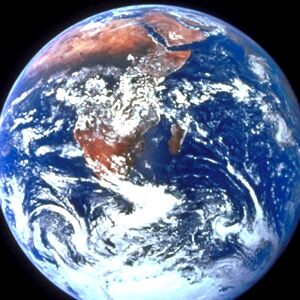
Researchers Put Faith in “Earth-like” Planet
Astronomers believe they may have found an “Earth-like world that looks to be capable of supporting life” (Spiegel Online, April 25).
Twelve years after discovering the first planet outside the solar system, researchers from the Geneva Observatory think they have found a system of at least three planets around the star called Gliese 581—20.5 light years from Earth (meaning it would take 20.5 years to get there traveling approximately 186,000 miles per second).
The planet does not appear to be gaseous; it is more like a large boulder. Scientists estimate it to be 50 percent larger than Earth, about five times as heavy, and that the mean temperature lies between 32 and 104 degrees Fahrenheit—meaning water would be liquid on this planet. “Models predict that the planet should be either rocky—like our Earth—or covered with oceans,” one of the team leaders, Stéphane Udry, said.
“The planet could be habitable,” another researcher says. The planet is closer to the star than Earth is to its sun, but Gliese 581 is smaller and colder than Earth’s sun.
The idea of a potentially habitable planet over 20 light years away already has scientists giddy. Spiegel Online says astronomers “may have found their holy grail.” Xavier Delfosse, a member of the team, said, “On the treasure map of the universe, one would be tempted to mark this planet with an X.”
What would make such a find the “holy grail” of astronomy—the X on the treasure map of the universe? The fact is that scientists are eager to locate any possible evidence that Earth is not unique, as a means of supporting evolutionary theories of randomness they have espoused to explain life on Earth. If life happened randomly here, they reason, it must have happened elsewhere in the vast cosmos.
So excited are these scientists, Spiegel reports, that the team is “already dreaming about sending a mission to the planet.”
If only scientists based their research on the source for all knowledge—the Guide Book to the universe written by its Creator. It reveals much about outer space, the most important of which is the purpose for it all!
The Bible reveals that Earth was once a boulder-like sphere capable of producing life, but—possibly like this Gliese 581 planet—was covered with water (Genesis 1:2-9).
The questions researchers should be asking are: Why is Earth unique? Why did its Creator work to restore it to life-sustaining conditions? And what made the planet uninhabitable in the first place? What made all the other planets that way? When and how can the other planets be repaired?
The answers to these questions are found in God’s Word and would be the most inspiring astronomical finds in human history. For these answers, request our free book The Incredible Human Potential, by Herbert W. Armstrong. Read the book that should be the standard text in every astronomy class on Earth.
